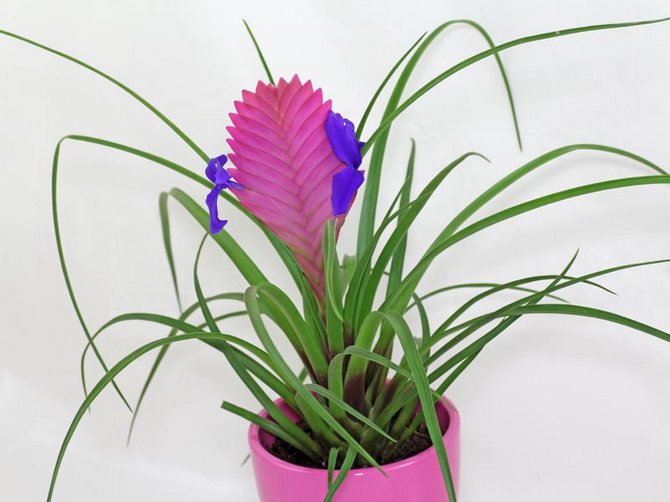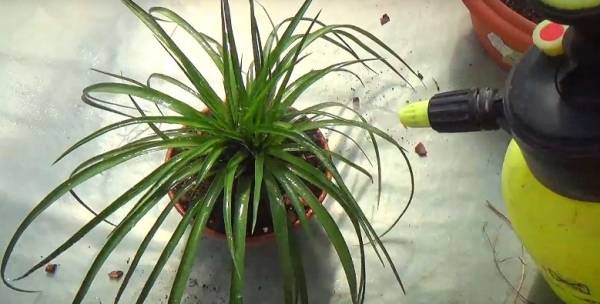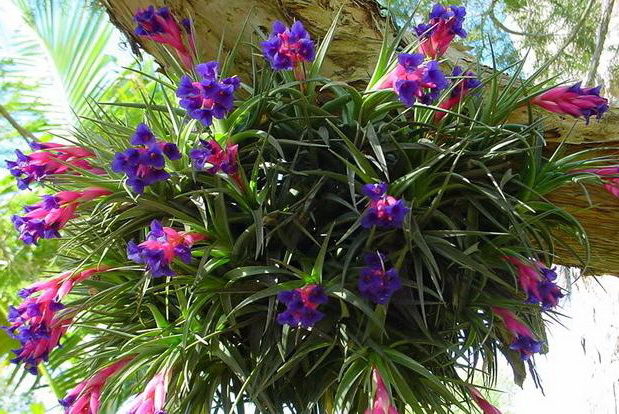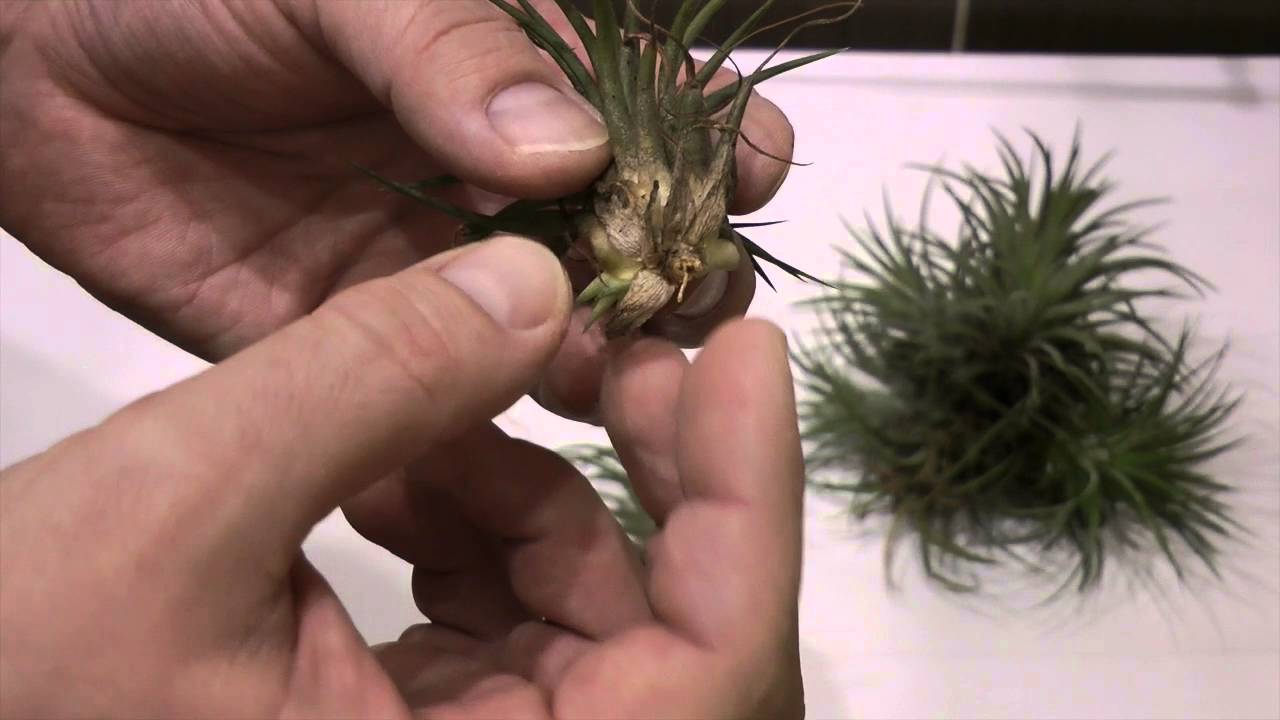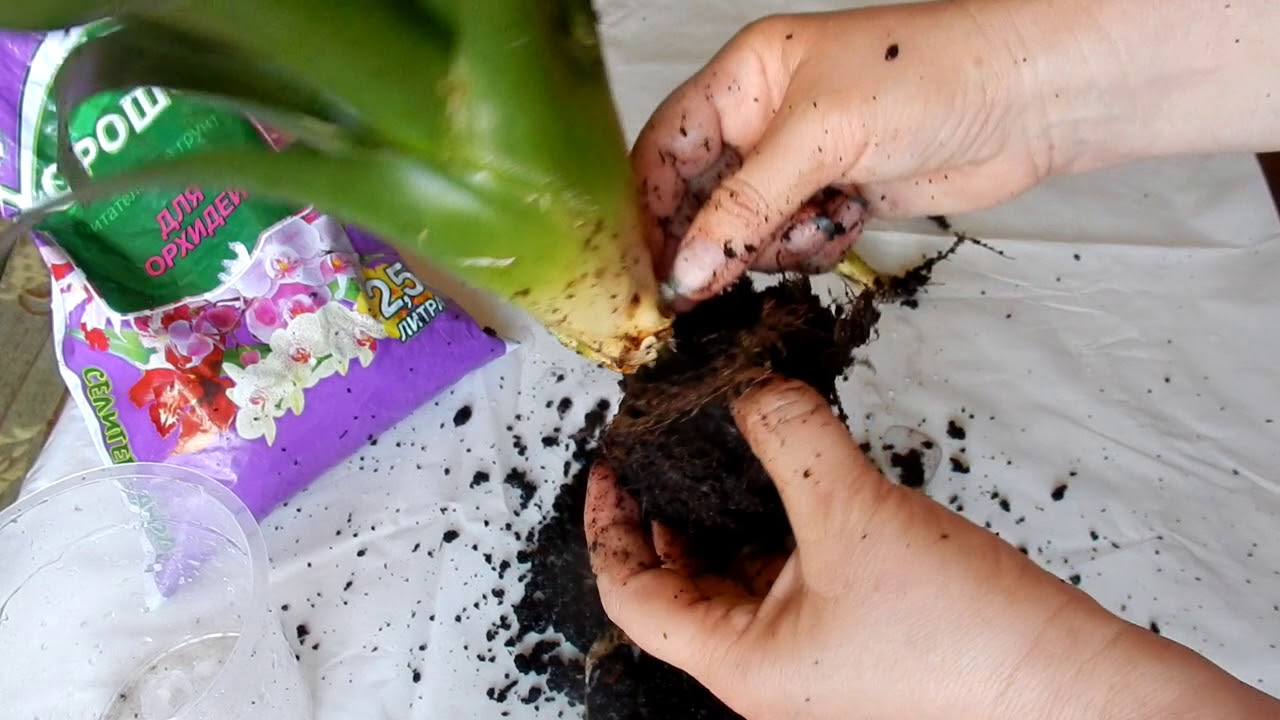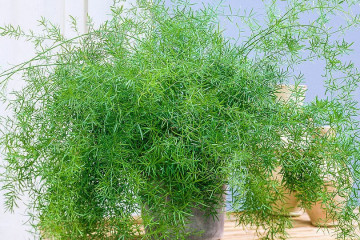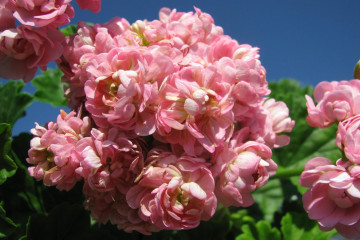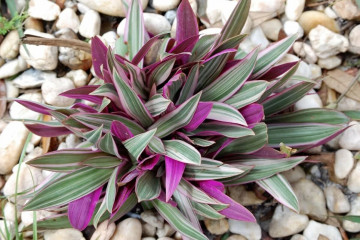Tillandsia Anita - home care
Content:
Tillandsia Anita is a wonderful houseplant that many people grow at home. In order for a culture to develop normally and bloom profusely, it needs to provide quality care. It should include proper watering, fertilization.
What does it look like, which family it belongs to
The culture belongs to the Bromeliad family. It is a short bush with a dense rosette of dark basal leaves. A feature of the plant is a wide spike-shaped inflorescence, which protrudes on a small peduncle from a rosette of leaves. The culture is characterized by bright blue flowers that contrast with pink bracts.
Briefly about the history of appearance
Tillandsia Anita is a Cyanea hybrid. It is a highly decorative crop based on blue tillandsia, an epiphytic plant from the Bromeliad family.
Homeland of the plant
The mother plant comes from Peru and Ecuador. It grows in areas that are 550-1000 m above sea level.
Tillandsia: home care
The culture is characterized by developed roots, so caring for Tillandsia Anita at home is not difficult.
Temperature
The plant is considered to be quite thermophilic. Indoors, you need to maintain the temperature in the range of + 17-26 degrees. The culture does not perceive temperature fluctuations well, therefore it should be protected from drafts. This is especially true in winter. In summer, the flower can be taken out to the balcony.
Lighting
Culture requires not too bright ambient light. In spring and summer, it can be kept on the northern windowsill. In winter, there will be little light for the flower, so it must be transferred to the west or east window.
Watering
It is recommended to water the culture with soft water. It should be defended or boiled. To make the water softer, it is allowed to add lemon or vinegar to it. After watering, the soil should be moist, but not wet.
Spraying
Periodically, leaf outlets must be sprayed. For this purpose, you should also use soft and settled water. When flowering, the procedure is recommended to be carried out carefully so that water does not get on the peduncle.
Humidity
The plant needs optimal moisture parameters - at the level of 70-80%. During the heating season, the indicators should be increased artificially. To do this, you need to put the flower on a pallet with damp pebbles or use special household devices.
Priming
Growing a crop requires a special substrate. To make it, you need to mix in equal proportions leafy soil, sphagnum moss, chopped pine bark.
Top dressing
It is recommended to feed the plant with liquid fertilizer every 2 weeks. It is allowed to use the preparation for orchids. In this case, the dosage indicated on the package is recommended to be reduced by 2 times.The plant accepts foliar feeding well. It can be sprayed with a mild fertilizer solution.
When and how it blooms
In order for the plant to bloom luxuriantly and profusely, it must be properly looked after. Thanks to this, the culture will retain its decorative properties.
A characteristic feature of the plant is a flat inflorescence. It has a spike-like shape and is located on a small peduncle. The bud includes flowers of a rich blue hue. It also includes bright pink bracts. They overlap each other.
The flowers wither quickly enough, and the spike with bracts persists for quite a long time. After the end of flowering, shoots form in the leaf axils. The mother's socket dies.
Pruning
Pruning pot Tillandsia is not recommended. The plant sheds old leaves on its own.
How does it multiply
Many gardeners are interested in cultivating a culture. This procedure is carried out in different ways.
Seeds
Planting material can be prepared at home or bought in a store. To germinate seeds, you need:
- Make a composition based on sand and peat.
- It should be moisturized abundantly.
- Spread the seeds on the surface in a small layer, without covering with soil.
- Water the substrate again.
- Cover the container with foil and move to a lighted place. It is important to keep the temperature high enough. It should be +25 degrees.
Seedlings appear in about 1 month. The plant will bloom only after 5 years.
By division after flowering
After the end of flowering, many daughter rosettes are formed on the plant. To multiply the culture, they must be separated and moved to new containers. This is done with children who have grown to the desired size and have roots.
To plant a plant, you need to make a special substrate. For this, sand and peat are mixed in equal parts. When the children are separated, the damaged areas must be treated with wood ash.
Place the pots in a shady place. The temperature regime should be at + 22-25 degrees. Full rooting will take a maximum of 3 months. After this period, the young culture must be planted in a new container. In this case, a substrate for orchids is used.
Transfer
To achieve the development of the root system and flower, the plant must be systematically transplanted. The first time this procedure is performed after purchase. But this should be done only if the plant does not bloom.
Procedure:
- They take a pot with a larger diameter and transplant it by transshipment.
- The remaining space is filled with earth.
- Watering the soil is allowed only after a week. Before that, you need to spray the foliage.
A wide pot is required for transplanting. The root system of the culture grows due to the formation of daughter rosettes. In a deep container, decay processes associated with liquid stagnation can begin.
The next transplant is carried out 3 years later. It is permissible to perform it only after the end of flowering. To do this, you should use a soil that is suitable for orchids. It must contain bark and peat.
Possible growing problems
If the rules for caring for tillandsia are violated, there is a risk of various problems.
Pests
The plant practically does not face pest attacks. In rare cases, it is attacked by a scale insect or mealybug. In such a situation, insecticidal preparations are used.
Other problems
With improper care of blue tillandsia, the following problems may appear:
- Lack of daughter outlets - in this case, it is necessary to apply fertilizers.
- Stem rotting - at the same time it is necessary to reduce the number of waterings.
- Softening the leaves - you need to increase the air temperature.
- Drying of the outlet - in this case, the children need to be allowed to grow stronger and move them to new containers.
- Gray spots on foliage - the bush should be treated with fungicides.
Tillandsia Anita is a popular flower with excellent decorative properties. To succeed in growing it, you need to provide the culture with quality care.
